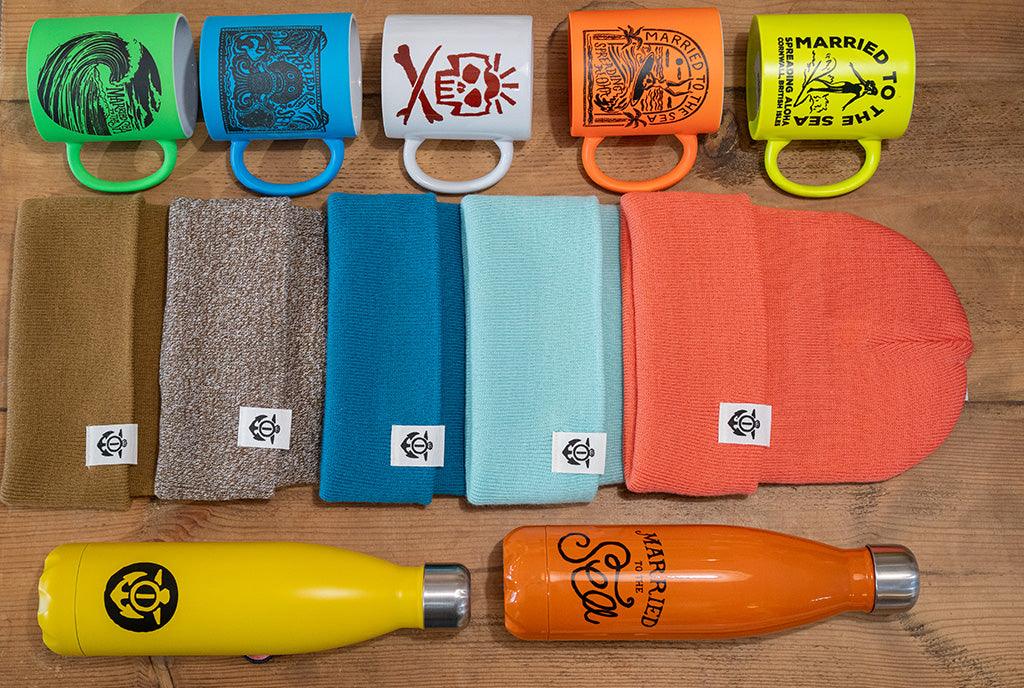Embracing Eco-Friendly Water-Based Inks
Embracing the Green Revolution in Branded Merchandise: The Shift to Water-Based Inks
In the realm of branded merchandise, an eco-friendly wave is making a splash, marking a pivotal shift from the traditional plastisol inks to the more sustainable water-based inks. This transition isn't just about adhering to environmental standards; it's a comprehensive overhaul aimed at enhancing product quality, reducing carbon footprints, and meeting the eco-conscious consumer's demands. Here's why the future of branded merchandise is looking greener and brighter with water-based inks.

The Environmental Edge
The environmental advantage of water-based inks is crystal clear, especially when we talk about the significant slash in VOC (Volatile Organic Compounds) emissions. Unlike plastisol inks, which release VOCs during the curing process, water-based inks boast a low to zero VOC emission level. This not only makes them a friendlier option for the planet but also improves air quality in production spaces, making them safer for workers. By switching to water-based inks, brands can significantly lower their environmental impact and step up as champions of sustainability.
Durability and Quality that Compete
Gone are the days when water-based inks were the underdogs in terms of durability and vibrancy. Thanks to technological advancements, modern water-based inks stand toe-to-toe with plastisol, offering a richness in color and resilience that can endure the test of time and frequent washing. This evolution means that choosing eco-friendly inks no longer requires a compromise on quality, allowing brands to deliver products that are both durable and vibrant.
Cost-Effectiveness: A Long-Term Perspective
While it's true that water-based inks might seem pricier upfront compared to plastisol, the long-term savings they offer can't be overlooked. The reduction in waste management costs and the need for less stringent health and safety measures translate into significant savings over time. Moreover, with the growing consumer demand for sustainable products, merchandise printed with water-based inks can command a higher market price, further offsetting the initial investment and tipping the scales in favor of water-based solutions.
Unmatched Versatility
The adaptability of water-based inks to a wide array of fabrics and materials is a game-changer for brands looking to diversify their merchandise offerings. From cotton to silk, these inks provide excellent adhesion and quality on various substrates, opening up a world of possibilities for product innovation and customization. This versatility also allows brands to cater to a broader audience, including those with specific preferences for fabric types and quality.

Tuning Into Consumer Preferences
Today's consumers are not just buying products; they're investing in values. The shift towards eco-friendly merchandise is a direct response to the growing consumer preference for sustainable and ethically produced goods. By adopting water-based inks, brands not only align themselves with these values but also tap into a growing market segment that prioritizes environmental responsibility alongside product quality.
Conclusion: A Sustainable Future Is Here
The move from plastisol to water-based inks in branded merchandise is more than a trend; it's a reflection of the industry's readiness to embrace sustainable practices for a better future. This transition, driven by environmental benefits, advancements in ink technology, cost-effectiveness, versatility, and consumer preferences, is setting a new standard for quality and sustainability in branded merchandise. As we look forward, it's clear that water-based inks are not just the future; they're the present, paving the way for eco-friendly innovations that don't compromise on quality or creativity.
In embracing water-based inks, brands have the opportunity to lead by example, demonstrating that it's possible to produce high-quality, vibrant, and durable merchandise without sacrificing environmental values. The journey towards a more sustainable and eco-friendly branded merchandise industry is well underway, and water-based inks are leading the charge.

FAQs
Water-based inks have a significant environmental advantage due to their low to zero VOC (Volatile Organic Compounds) emissions. Unlike plastisol inks, which can release harmful VOCs during the curing process, water-based inks improve air quality in production spaces and reduce environmental impact, making them a safer and more sustainable choice.
No, with advancements in ink technology, water-based inks now offer durability and color vibrancy comparable to plastisol inks. These inks can withstand frequent washing and maintain their quality over time, allowing brands to produce eco-friendly products without sacrificing durability or appearance.
While the initial cost of water-based inks may be higher than plastisol, they offer long-term savings through reduced waste management costs and fewer health and safety requirements. Additionally, the growing consumer demand for sustainable products means that items printed with water-based inks can often command a higher price in the market.
Water-based inks are adaptable to a wide variety of fabrics and materials, offering excellent adhesion and quality on everything from cotton to silk. This versatility allows brands to expand their product offerings and cater to a broader audience with diverse preferences for fabric types and product quality.
The shift towards water-based inks is largely driven by consumer demand for sustainable and ethically produced goods. By choosing water-based inks, brands align with environmental values important to today's consumers, tapping into a market segment that prioritizes eco-friendly practices alongside product quality.





